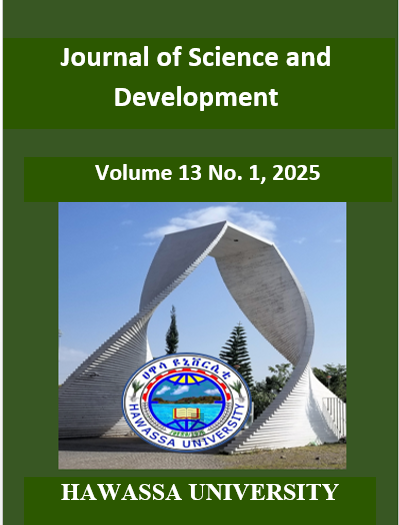Suitability of Ethiopian Cassava Varieties for Cookies with Chickpea Flour
Ethiopian Cassava Varieties for Cookies Making
Keywords:
Cassava varieties, Chickpea proportion, Cookie, Physicochemical properties, Bioavailability of mineralsAbstract
The use of cassava powder in bakery products, including cookies, is gaining attention in Ethiopia. However, cassava varieties grown in Ethiopia vary widely in their characteristics, which may influence their food applications that require investigation. This study aimed to evaluate the effects of cassava varieties and chickpea proportion on the quality of cookies from cassava-chickpea composite flour. The composite flour was prepared by blending powders from four cassava varieties (Kello, Qulle, Hawassa-4, and Chichu) with chickpea flour at 40%, 50%, and 60% composition. The findings indicated that the functional characteristics and physical properties of cookies were significantly affected by cassava varieties and chickpea proportion. Cookies formulated from Hawassa-4 cassava variety exhibited a high spread ratio. A cookie from 40% Hawassa-4 cassava and 60% chickpea was found to have better spread ratio and sensory qualities (taste, texture, flavor, and crispiness), high protein (12.85%) and fiber (5.90%) contents. Mineral analysis revealed the highest calcium content (75.90 mg/100 g) in cookies made with 40% Qulle, and the highest zinc content (2.23 mg/100 g) in those with 40% Kello. The phytate-to-calcium molar ratio (0.05–0.08) and phytate-to-zinc ratio (0.66–5.88) in all cassava-chickpea composite cookies were within acceptable limits, ensuring bioavailability of these minerals. However, the phytate-to-iron ratio exceeded the threshold of 1 in most formulations, highlighting potential challenges with iron absorption. These findings highlight the potential of cassava-chickpea composite cookies, particularly those made with 40% Hawassa-4 cassava, as a nutritionally valuable option to address protein-energy malnutrition in Ethiopia.
Downloads
Published
Issue
Section
License
Copyright (c) 2025 Eden Leka Lencha, Dr., Dr., Dr. Beruk Berhanu

This work is licensed under a Creative Commons Attribution 4.0 International License.
The author(s) of the individual articles remain the copy right of their articles.

